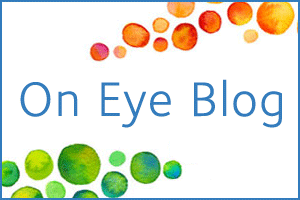
Having trouble focusing on near objects? Do you find yourself squinting to read a menu, or moving a book farther away from your face in order to see more clearly? You may be experiencing one of two very common vision conditions - hyperopia or presbyopia.
What is hyperopia?
Commonly referred to as farsightedness, hyperopia is a condition in which the eye is underpowered. Objects in the distance are viewed clearly; however objects close-up appear blurry. Symptoms include squinting, eyestrain, and near objects appearing blurry. Occasionally, headaches may occur when focusing on near objects (during activities such as reading or sewing) for an extended period of time. Hyperopia is usually present at birth and tends to run in families.
What is presbyopia?
Presbyopia is a natural part of aging in which the lenses in the eye thicken and lose their elasticity, and the muscles surrounding the lens weaken. This causes the worsening of vision and the decreasing of focus, especially on near objects. Symptoms include blurred vision (which can worsen in dim light or when you are fatigued), eyestrain and headaches. The condition usually starts around age 40 and progresses through age 60.
I think I may have hyperopia or presbyopia. What do I do?
Contact your eye care professional, who can perform a comprehensive eye exam, which will help detect either condition. Contact lenses or glasses can correct both hyperopia and presbyopia.
Spherical contact lenses or glasses can correct for hyperopia - correction requires a "plus" lens containing additional optical power to permit sharp vision of near objects. Multifocal contact lenses or glasses can correct for presbyopia - multifocal contacts focus light from both near, intermediate and far distances to the back of the eye, creating the clearest possible image. For more information, click here or talk to your eye care provider.





